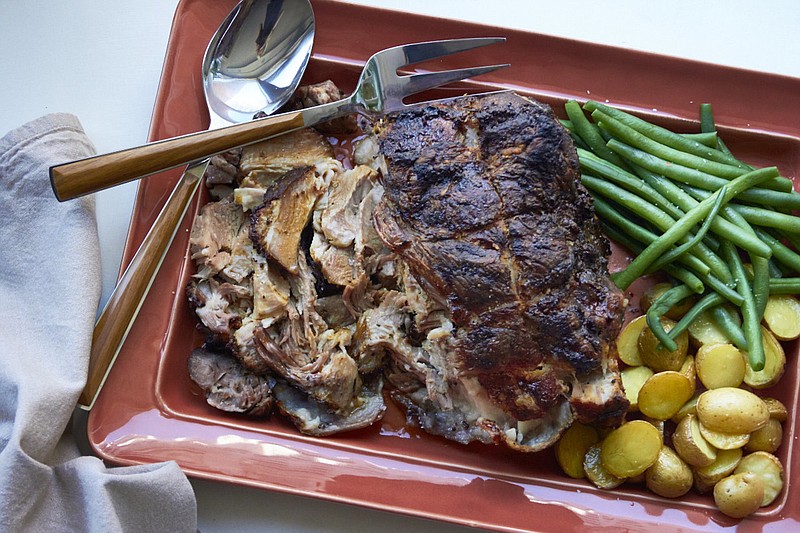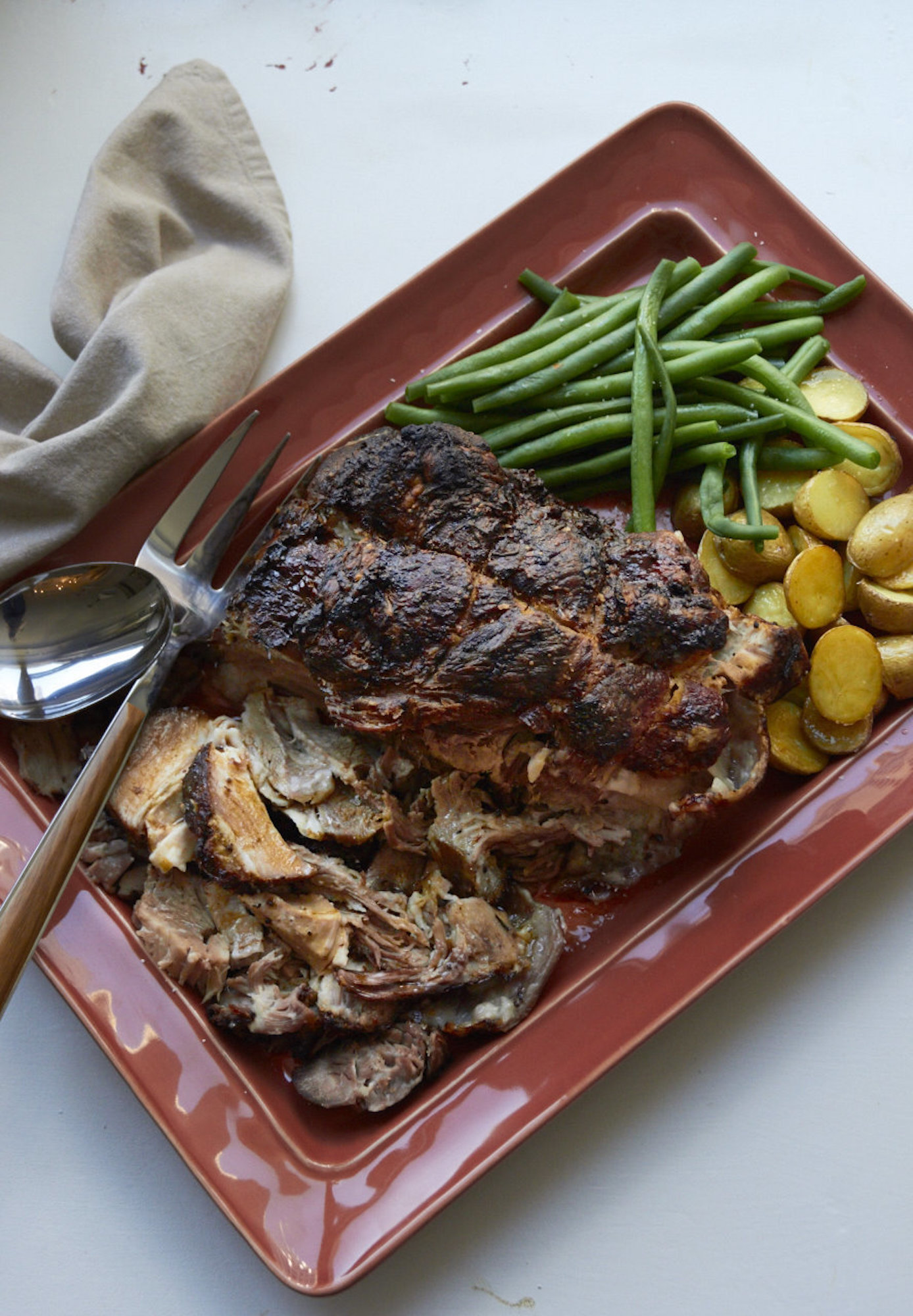
Leave pork butt or shoulder left in a low-temperature oven for long enough and it will practically fell apart.
The cut of meat is so flexible, the cooking time could be stretched by an hour, or three, and the roast wouldn't be any worse for the wear. It's a roast that could be plunked on the table whenever everyone was ready to eat.
Rushing the process won't help; you've got to keep the heat low and the time long. The best part? This is free time you can spend reading, dancing, sleeping, cleaning a closet, saving kittens from trees.
You can leave the roast in the very low oven for an extra 1 to 3 hours with no repercussions. If you feel it needs a bit more browning or caramelization at the end, turn the heat up to 450 degrees for 15 minutes before pulling the roast out of the oven, then make sure it rests for a bit so the fibers can relax and the juices regroup.
If all has gone as planned, the meat will be so tender that the slices won't hold together. That's part of the appeal.
You might serve this with some green beans, roasted potatoes and a salad. Leftovers make amazing quesadillas, burritos, soups, stews, sandwiches and so on.
Fall-Apart Roasted Pork Shoulder with Rosemary, Mustard and Garlic
2 tablespoons chopped garlic
3 anchovies, rinsed
2 tablespoons chopped fresh rosemary
2 teaspoons kosher salt
1 teaspoon freshly ground pepper
1/4 cup olive oil
2 tablespoons coarse Dijon mustard
1 6-pound boneless pork shoulder, trimmed of excess fat and tied
In a small food processor, combine the garlic, anchovies, rosemary, salt and pepper. Add the olive oil and process until it forms a paste, scraping down the sides. If you don't have a mini food processor, just mince the ingredients and then transfer them to a bowl. Use a fork to mash them into the olive oil. Remove the blade and use a fork or spoon to stir in the mustard. Rub the paste all over the pork shoulder, loosely cover it with plastic wrap, and refrigerate from 2 to 24 hours.
Bring the pork to room temperature, which will take about 45 minutes to 1 hour, and toward the end heat the oven to 450 degrees. Place the pork in a shallow roasting pan and roast, fat side down, for 30 minutes, until the top starts to brown. Turn the heat down to 250 degrees and continue to cook for 6 to 8 hours, until the middle of the roast registers 180 degrees on an internal thermometer and, as you slide the thermometer in you can feel that the meat is very tender throughout. About 1/2 hour before you are ready to call it done, pour off most of the juices from the pan into a heatproof container, like a Pyrex measuring cup. Place this in the fridge, where the fat will rise to the top.
When the meat is cooked, if you think that the outside of the roast could use a bit more crust/brownness, turn the heat back up to 450 degrees and let it cook for another 15 to 20 minutes, to give the outside a crunchier texture.
Remove from the oven and let sit for about 20 minutes, especially if you have raised the heat at the end. Spoon the fat off the reserved juices in the fridge and pour the cooking juices into a serving pitcher or bowl (warm it in the microwave or in a small pot if you like). Slice the pork as thinly or thickly as you like, knowing the meat will fall apart at least slightly. Sprinkle a bit of salt on the sliced meat before serving, and pass the pan juices on the side to drizzle.
Serves 10 to 12. Start to finish: 8 hours (mostly hands off).

